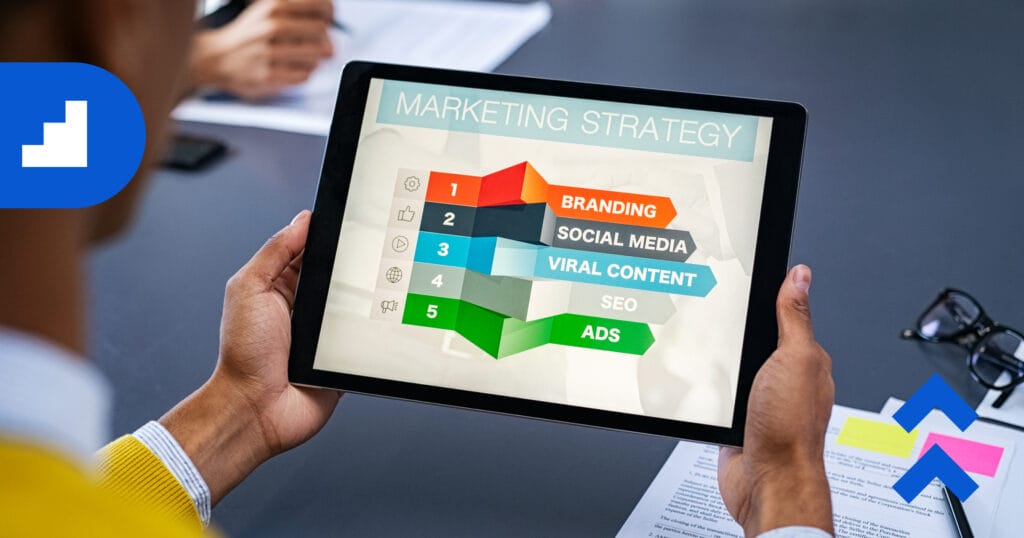
In my previous article, we talked about common mistakes specialty brands (and many other types of businesses) make with digital marketing. Now that we’ve saved you a bunch of money and disappointment by showing what not to do, let’s talk about what you should do to charge up your sales pipeline using digital channels.
Content Marketing is King
Content marketing is far and away the single best thing you can do to generate a sustainable, highly-converting pipeline of customers and keep them coming back for more. But as with most things, there’s a lot of nuance in the details.
One piece of content marketing I saw recently consisted of a YouTube video intended to go viral. The organization probably spent at minimum tens of thousands of dollars producing it (perhaps even six figures if they brought in an ad agency). At launch, it was e-mailed to the entire organization directly by the CEO. How well did it do? The total number of views in the days following launch accounted for approximately 1/3 of the organization’s staff of several hundred. Not only did the video not go viral; about 2/3 of the staff didn’t even watch it. Talk about embarrassing.
In order to work, your content has to be good, meaning it has to subjectively appeal to your target customers. This will be different for every brand, and often different content is needed for different customer segments. You need to understand your customers before you invest in building a bunch of content that they don’t care about. So if you’ve never done any work in customer analysis or segmentation (which is common if you’re an SMB), at least do some informal customer surveys before you start producing significant amounts of content.

What is Good Content?
Good content should connect to your brand, but not necessarily be about your brand. There’s two potential errors to avoid. First, if you create content that is popular but doesn’t connect to your product or service at all, it’s probably not going to lead to many sales. It’s surprisingly possible to go viral and still have little to show for it in terms of revenue. This is why in the previous article we talked about why hits/impressions are often a useless metric that marketers use to make themselves look good without impacting sales. Your content needs to get people into your sales funnel in order to be useful.
The second error is making content that’s all about your product but doesn’t offer any real value to the customer; in other words, it’s just a sales pitch. This can work in certain contexts — e.g., if you’re running a legacy TV or print ad for a big sales promotion — but it generally doesn’t work well in digital. Your content needs to add value to customers that will make them want to view it even when they aren’t actively buying. The point is to keep your brand top of mind so that when that prospect is in the market, they think of you. But they won’t stick around long enough for that to happen if all you’re doing is pushing sales.
It’s a tough balance to strike. That’s why content marketing done well is so effective. Plus, it has the additional benefit of boosting your SEO so that more new prospects who are actively in the market today, but don’t know about you yet, can find you.
Long Form and Short Form Content
Content can be either long form or short form. There’s no universally-recognized definitions for what those mean, but you can think of short blogs or e-mails (a few paragraphs or less), most social media posts, memes/images, or audio/video that is a few minutes or less as short form content. Anything longer can be considered long form content. For example, the type of in-depth articles you find here in Customers, Costs, and Cash Flow is long form content.
As for what works for your brand, there’s no way to know for sure without testing, and you may want to do a blend of both long and short form. However, it’s usually true that long form content is preferable for specialty brands. You may think that with peoples’ short attention spans, long form content would drive them away, but that’s generally not true.
Someone who is seriously considering or open to buying a specialty product or service (which often means a premium price) will usually want to dive deep with your brand before making the commitment. Long form content allows them to do so. The people you are driving away are unlikely to be buyers, while the people who are willing to consume long form content are much more likely to buy.
Types of Content Marketing
What type of content should you create? Whatever is going to reach and appeal to your target customers. I’ll say it again: you have to know something about your customer before this can work.
Written Content:
Written content published on your website tends to have the best SEO benefit. This could be blogs, white papers, guides, or in some cases even books. But don’t think you can just churn out AI-generated articles; it probably won’t do much for your SEO and might even backfire.
AI-written articles are often easy to detect: if not by people, then at least by algorithm. And because many of the major players in consumer-facing tech platforms have their own competing AI investments, you may find your content caught in the middle of an AI-SEO war. In other words, content generated by one company’s AI may be penalized by another’s search. For example, content generated by ChatGPT (which is partnered with Microsoft) might be penalized by Google.
You can certainly use AI to help you write content, but the best use cases are for things like research, ideation, outlining / initial drafting, and editing. The most important thing to remember is your written content should have an authentic human voice. The only way to do that reliably is if your final draft is mostly written by an actual person.
Audio and Visual Content:
Audio and visual is the other major form of content. YouTube has been around for a long time, and even Instagram is a very senior platform in this space. TikTok is not exactly new (especially if you consider the now-defunct Vine as its conceptual predecessor), but it’s definitely become a big thing in the last few years. And memes, of course, are everywhere.
Your production quality should scale with your business. For example, if you’re a brand new bootstrapped startup, it’s okay to have low production value video as long as the underlying content is good. But as your company grows, you’ll need to ramp up things like cinematography, lighting, audio quality, effects, and editing. A medium-sized company or larger should probably have at least a couple full-time staff dedicated to that if they want to get serious about this type of content.

Podcasts have also been around for ages and remain an incredibly popular content medium. Being a podcast guest allows you to borrow someone else’s audience and get new exposure for your brand. And it’s a value-add for the podcast host, too, because doing a podcast well takes a lot of work and finding quality guests on a regular basis is not easy.
But note that being a quality guest is key. If you think a podcast means a captive audience for your sales pitch, you’re going to flop. People want to get value out of listening, and they don’t want to hear you pitching them the whole time. 95% of what you say shouldn’t even be talking about your offering, except to the extent that it’s incidental to some other value-add story. You need to showcase your expertise and add value to listeners that doesn’t involve buying from you. Then and only then, usually at the very end of the show, can you make a soft pitch inviting listeners to check out your company or otherwise connect with you.
You can also start your own podcast, which has the potential for even greater content marketing exposure but is a way bigger commitment. Most podcasts struggle for consistent production or otherwise go under within the first year or so. Before you start one, make sure you’re ready to commit and ideally have been a guest yourself on some other long-tenured podcasts so that you have a sense of what works. Also make sure you have a clear value proposition for why people (ideally potential customers) would want to listen to your show. And do not skimp on editing. Good editing can make the difference between success or failure.
A universal rule for guests and hosts alike is you need to get some good audio equipment, meaning a decent microphone and headphones. You absolutely don’t need top of the line equipment, but you also shouldn’t be using your phone or your laptop’s onboard microphone and speakers. Audio quality is one of the most important things that goes into a good podcast.
How do you find podcasts where you can be a guest? There are a multitude of services that match guests and shows, ranging from do it yourself options up through curated white glove services that handle all the pitching and booking for you. Most business leaders will probably want something in-between. But whatever method you choose, first get clear on your customer profile and look for the type of shows where those people are listening. Then make sure you’re ready to talk about topics that are valuable to them, not just what’s important to you.
Public Relations (PR):
One type of content marketing that is usually forgotten in these discussions is PR. When you get quoted by the press, you’re creating content that reaches a larger audience than you otherwise have available. You’re also establishing domain expertise around your product or service, because being quoted by the press is a tried and true method of showcasing that someone is an expert. And it will also benefit your SEO.
Having said that, doing PR well takes time to learn, and anyone other than a large corporation will rarely see sufficient value by hiring a traditional PR firm (and even for a large company that ROI is questionable). You also shouldn’t fall into the trap of thinking press releases will get you anywhere. They may, but generally that only works if your brand is already fairly well known. Reporters aren’t chomping at the bit to write a story about your unknown company.
So how should you do PR? You need to build direct relationships with reporters, or respond to queries where reporters already have a story in the works and are actively looking for sources. There are various services which help you find those queries, the most famous being Help A Reporter Out (HARO). However, HARO can be extremely time-consuming, fiercely competitive, and clunky to use, and many of the queries are of dubious quality. There are better options available that offer higher quality and easier use with less competition. If you’re interested, please contact me for a referral.
For most companies, a blend of different forms of content is ideal, though it’s fine to focus primarily on either written or audio/visual. PR should always be supplementary to one or both of those. Do some testing and find out what works for you.

Content Marketing Distribution
Once you produce content, how do you actually get it in front of your potential customers?
The best way is to have a direct relationship with those prospects or customers, such as where they are logged on to your platform or app, or they’re on your e-mail list. But this is also the hardest distribution method to create and is sort of a catch-22 growth tactic, so don’t expect to get there right away. Even an e-mail list can take a long time to build, though if you have existing customer e-mails, that’s a great place to start. Just make sure you’re compliant with your country’s anti-spam laws, and note that it’s generally not recommended to buy an e-mail list; the quality is almost guaranteed to be lacking.
Co-created content, like podcasting or co-authoring, is a great way to borrow someone else’s audience while growing your own. Pay-per-click ads or influencer/affiliate promotion can also work as content distribution channels; just note the caveats that were discussed in the previous article.
You can also syndicate your content on other platforms. This is one of the main uses of social media, provided you pair it with the other practices necessary to do social media well. For written content, consider syndicating on Medium or remixing existing content to answer questions on Quora. For audio and visual, good platforms include YouTube, Instagram, Pinterest, TikTok, and/or Vimeo. Platforms that work for either include Twitter, LinkedIn, Reddit, and Facebook. The important thing is knowing where your potential customers are spending time, then building up your presence on those platforms to distribute your content.
Just don’t get tunnel-vision with any third-party platform, because no matter what, you will never own that user relationship. Your syndication efforts should always attempt to bring the user into some type of direct relationship with your company. Getting an e-mail sign-up is usually the easiest to accomplish, and distributing your content through your own e-mail list is almost always a great move. If you can build an opt-in mobile text list, even better, but that’s really difficult to do.
Final Thoughts
If your business needs immediate sales just to stay alive, this isn’t the tactic for you. The biggest drawback to content marketing is that it moves very slowly and takes a long time to show substantial results. How long depends on a lot of factors unique to your company, but assuming you are consistently engaging in content production, expect an absolute minimum of six months (and likely longer).
But if you’re playing the long game with your business, content marketing is the best way to generate a steady stream of warm, inbound customers who are ready to buy. As a specialty brand in particular, it’s also the key to selling at a higher price point and keeping customer coming back in the future with little or no competition.
In short, content marketing is about building brand loyalty and trust because you’ll be the first thing the prospect thinks about when they are ready to become an active buyer.
Connect with Nick to discuss how he can help optimize your digital marketing strategy.
On Cansulta, you can browse consultants by expertise, and connect with vetted professionals in Intro sessions FREE.
Not sure what expertise you need?
Our Concierge team is happy to discuss your needs and match you with the best suited consultant.
